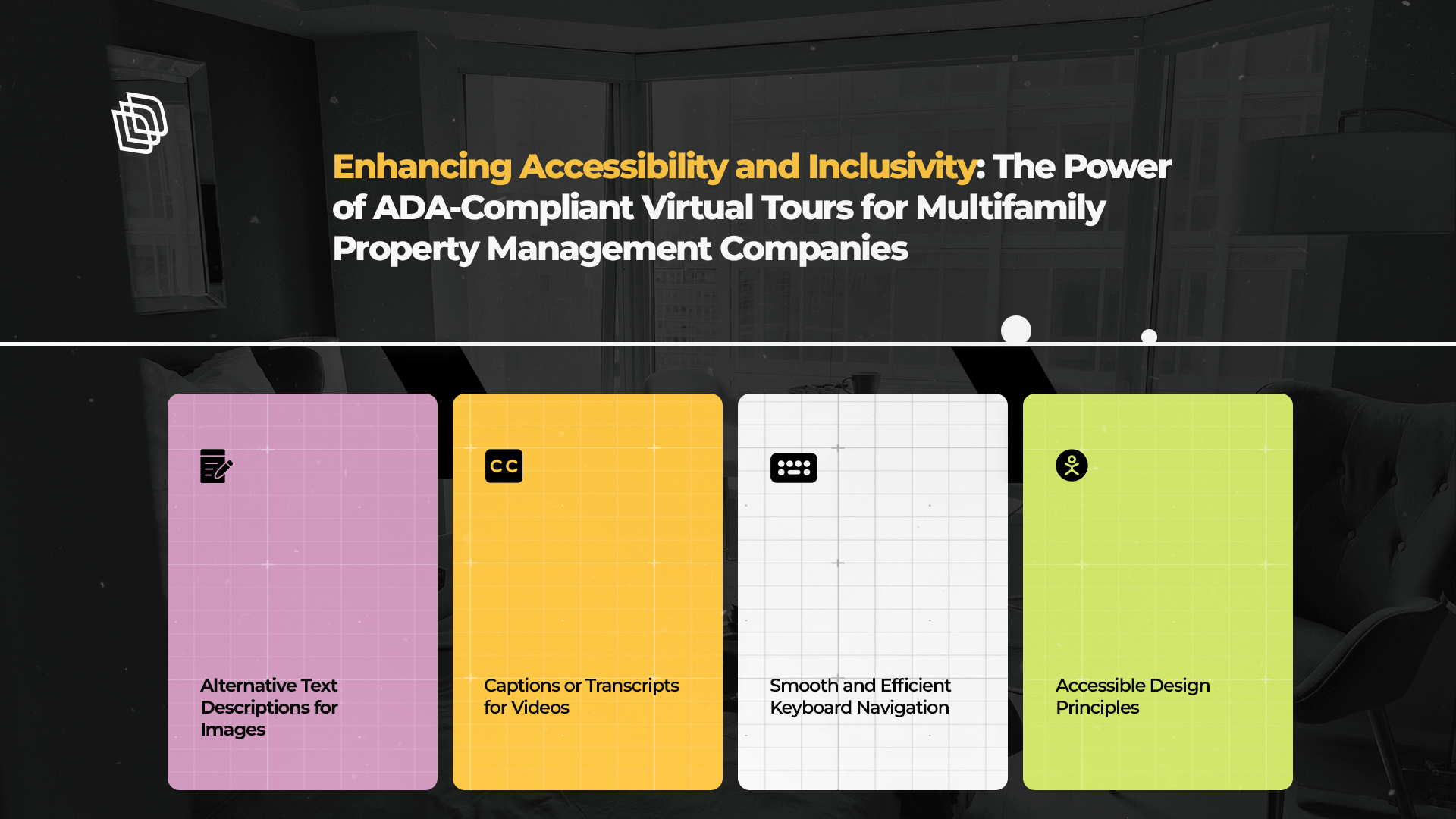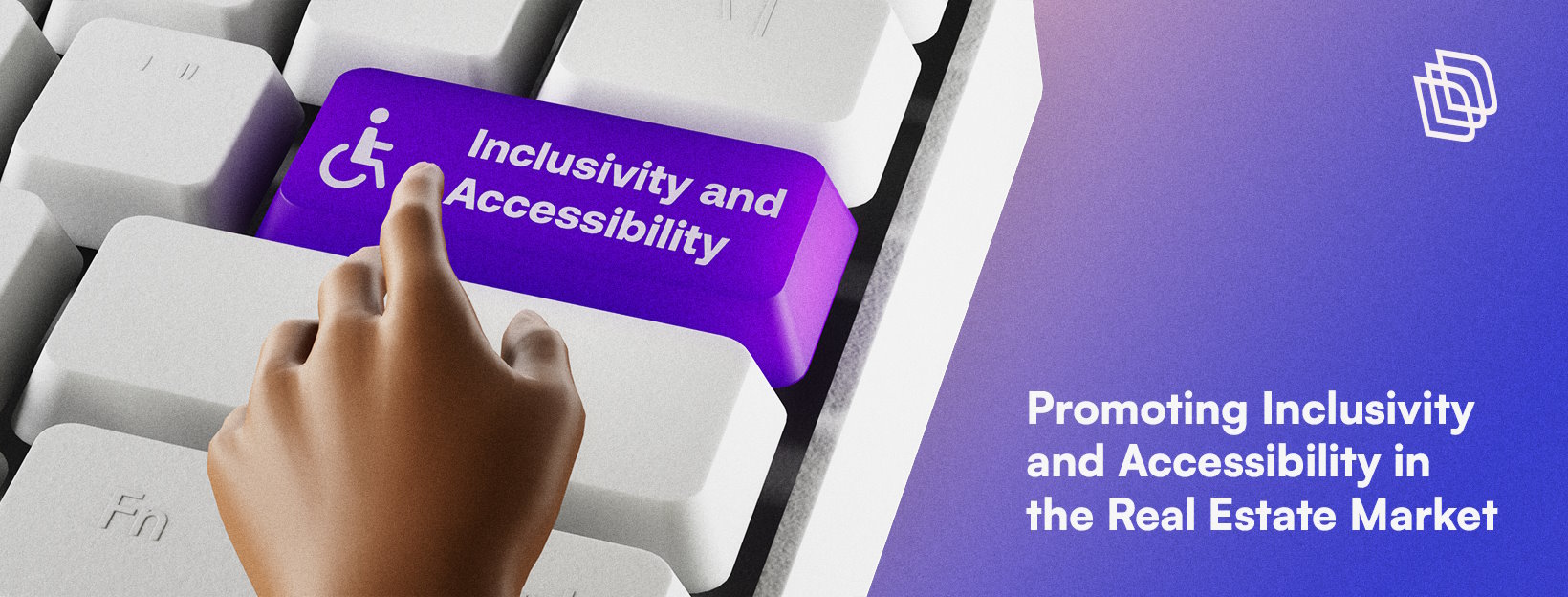The advent of technology has undeniably reshaped numerous sectors, with the real estate industry being no exception. More particularly, 3D tours, Matterport tours, and virtual tours have redefined the way property viewing is conducted. These innovative techniques have been hailed for their ability to offer a comprehensive, immersive experience of properties, regardless of geographical boundaries. However, their true potential remains unrealized until they become universally accessible, including to those with visual impairments. Enter ADA-accessible 3D tours, an initiative that ensures inclusivity and equality within the property market.
Recognizing this need, the real estate sector has seen significant efforts to make virtual tours ADA-compliant. For instance, 3DApartment.com recently announced the launch of their ADA-accesible 3D virtual tours, a reflection of their commitment towards inclusivity. Leveraging advanced technologies such as computer vision and generative AI, these tours provide visually impaired individuals with a comprehensive property viewing experience, similar to those without such impairments.
Understanding the Importance of ADA Accessibility in Virtual Tours
The Americans with Disabilities Act (ADA) is a federal legislation prohibiting discrimination against individuals with disabilities. It mandates accessibility across public life aspects, including digital content. Virtual tours, being a form of digital content, fall under these regulations.
There has been a significant increase in lawsuits against businesses for non-compliance with ADA standards in virtual tours. For example, a national hotel chain had to settle a lawsuit for $75,000 in 2019, for not providing accessible virtual tours on its website. Such instances highlight the criticality of ensuring ADA compliance in virtual tours to avoid potential legal repercussions.

Benefits and Challenges of ADA-Accessible Virtual Tours
Beyond the legal framework, ADA-compliant virtual tours serve numerous benefits that extend to a broader audience. They improve overall user experience by offering features such as screen reader compatibility, easy navigation, and adjustable font sizes. These benefits extend to older adults, those with temporary disabilities, and people with situational impairments.
However, making virtual tours ADA compliant presents its own set of challenges. For instance, virtual tours should have concise and descriptive alternative text descriptions (alt-text) for images. This enables visually impaired individuals to understand image content through screen readers. Also, videos used in these tours should be captioned or have transcripts for those hard of hearing. Furthermore, these tours should facilitate efficient keyboard navigation and adhere to accessible design principles, such as sufficient color contrast and clear layouts.

The Evolution of 3D Tours and Inclusivity
As the real estate landscape continues to evolve, 3D tours have become a pivotal feature for property listings. They offer an immersive 360-degree view of the property, allowing potential buyers to explore the entire space from their own homes. This is particularly beneficial for individuals who may be relocating from another city or country.
However, to ensure universal accessibility, companies such as Listing3D have introduced ADA tours. These tours provide a detailed description of each room or area, going beyond merely identifying different rooms. Crucial information about flooring color and type, wall color and texture, door types, decor, and furniture, if applicable, is also included. This initiative ensures that visually impaired individuals can experience a comprehensive representation of the property.
The Future of ADA Accessible Virtual Tours
With technology increasingly impacting the renting process, ADA-accessible virtual tours are becoming essential for the real estate market. These tours not only comply with ADA regulations but also enhance the property viewing experience for those with disabilities. Furthermore, they can significantly improve a rental community’s reputation as a welcoming and inclusive complex.
By staying abreast of the latest trends in real estate marketing,. Relevance of ADA-Accessible 3D Tours
In a rapidly digitalizing world, property viewings have seen a significant shift from physical walk-ins to immersive online experiences. 3D tours, Matterport tours, and virtual tours are revolutionizing the real estate market, offering individuals an interactive and accessible method to explore properties remotely. However, there has been a growing need for these tours to be compliant with the Americans with Disabilities Act (ADA), to ensure equal access to all individuals, including those with visual impairments.
Companies like 3DApartment.com have acknowledged this gap and developed ADA-compliant 3D tours that not only offer a detailed overview of a property but also provide an inclusive platform for all users.
Understanding the Role of ADA in Virtual Tours
The ADA is a federal law aimed at prohibiting discrimination against individuals with disabilities. This law mandates accessibility across various aspects of public life, including digital content such as virtual tours. Compliance with ADA standards in virtual tours is essential to prevent lawsuits, financial penalties, and brand reputation damage.
In fact, in recent years, there has been an increase in legal cases against businesses for their non-compliance with ADA standards in virtual tours. For instance, in 2019, a national hotel chain was sued for not providing accessible virtual tours, leading to a settlement of $75,000. Similar lawsuits were filed against a real estate company, seeking damages of $200,000. Therefore, ensuring ADA compliance in virtual tours is a significant step to evade legal repercussions.
The Significance of ADA-Accessible 3D Tours
ADA-accessible 3D tours not only fulfill legal requirements but also offer numerous benefits to businesses and their clients. These tours demonstrate a commitment to inclusivity, improving overall user experience for all users, including older adults, individuals with temporary disabilities, or those with situational impairments.
ADA-compliant tours offer extensive descriptions of spaces, detailing features like flooring type and color, wall texture and color, door types, and present decor and furniture. This level of detail brings visually impaired individuals on par with those without visual impairment, offering them a similar immersive experience.
This enhanced user experience can also lead to a wider client base. By providing ADA-compliant tours, businesses ensure their content is user-friendly and accessible to all, irrespective of their disabilities.
Challenges and Trade-offs in ADA-Compliant Tours
Despite its numerous advantages, creating ADA-compliant virtual tours is not without challenges. Making a virtual tour ADA compliant may seem overwhelming initially, especially when it comes to providing accurate alternative text descriptions for images, captions or transcripts for videos, ensuring smooth keyboard navigation, and adhering to accessible design principles.
However, by addressing these challenges and making the necessary trade-offs, businesses can ensure their virtual tours are not just ADA compliant, but also more appealing to a broader audience. And companies like 3D Apartment are already offering comprehensive solutions to these challenges, with their innovative ADA-accessible tours.

Incorporating ADA Compliance in 3D Tours: A Strategic Move
For multifamily property management companies, incorporating ADA-compliant virtual tours is more than a legal requirement – it’s a strategic move towards inclusivity and accessibility. Companies like 3DApartment.com are paving the way by creating ADA-accessible tours that not only fulfill the requirements of ADA but also provide an immersive property viewing experience for all users.
By ensuring that their virtual tours meet ADA standards, these companies can expand their potential client base and improve the overall user experience for all potential clients. This not only helps them avoid legal repercussions but also enhances accessibility, inclusivity, and client satisfaction.
In a rapidly evolving real estate market, where 3D tours are becoming an indispensable tool, it is essential for businesses to recognize the importance of ADA-compliance. By.) Real estate has long been an industry reliant on physical interactions, in-person tours, and face-to-face transactions. However, the digital era has ushered in a new way of doing things, paving the way for virtual tours and 3D simulations that enable potential buyers and renters to explore properties remotely. Today, these tools are not just desirable features but necessary components of the real estate market. The onset of the global pandemic has further emphasized this need. However, while these tools enhance convenience, they also highlighted a significant gap – they are not universally accessible to everyone, particularly to those with disabilities.
The Americans with Disabilities Act (ADA) mandates that all digital platforms and their content, including websites and virtual tours, must be accessible to individuals with disabilities. Despite the act being in place since 1990, many real estate companies are yet to make their virtual tours fully ADA-compliant. This failure to accommodate individuals with disabilities can lead to costly lawsuits and penalties.
Recognizing this problem, 3DApartment.com , an industry leader in digital real estate solutions, launched ADA-accessible 3D virtual tours in a move to promote equal access and inclusivity in the real estate market. This revolutionary step redefines how we perceive accessibility in real estate, underlining that virtual tours are more than just a marketing tool – they’re a medium to promote inclusivity and equality.
3DApartment.com ‘s ADA-accessible tours are meticulously crafted, going beyond simply naming rooms. They offer comprehensive descriptions of the spaces, including crucial features such as flooring color and type, wall color and texture, door types, and any present decor and furniture. This detailed approach allows visually impaired individuals to form a mental image of the property, thus giving them an immersive experience akin to those without visual impairments.
These innovative tours harness advanced technologies like computer vision and generative AI to provide an inclusive experience. This move not only paves the way for a more inclusive future in the real estate market but also sets a new benchmark for other businesses to strive for.
The decision to include ADA-accessible tours in real estate digital solutions has significant benefits. Notably, it enhances the user experience for all, not just those with disabilities. Features such as screen reader compatibility, easy navigation, and adjustable font sizes are universal design principles that make virtual tours user-friendly and accessible to a wider audience, including older adults and individuals with temporary or situational impairments.
ADA-compliance also offers tangible business benefits. It can attract a wider pool of potential clients, hence potentially boosting revenue. Moreover, being inclusive improves a company’s reputation, displaying a commitment to fairness, inclusivity, and equality.
Implementing ADA-accessible virtual tours, however, is not without challenges. It requires careful planning and execution. Key considerations include providing alternative text descriptions (alt-text) for images and captions or transcripts for videos, designing for smooth keyboard navigation, and ensuring sufficient color contrast and clear layouts. These considerations may seem daunting, but companies like 3DApartment.com are paving the way, demonstrating that it’s feasible and advantageous.
Despite these strides, there’s still a long way to go in terms of widespread adoption of ADA-compliant 3D tours. Many businesses may overlook the importance of inclusivity due to a lack of awareness or understanding. However, the movement towards a more inclusive digital real estate market is undeniable. ADA compliance should not be seen as a burden but as a critical factor for modern businesses to consider.
In conclusion, the real estate market is evolving, and with it, the need for ADA-accessible 3D tours is increasing. 3DApartment.com has demonstrated that it’s not only possible to balance the different factors but also beneficial. The commitment to promoting equal access and inclusivity sets the stage for a more inclusive future.


